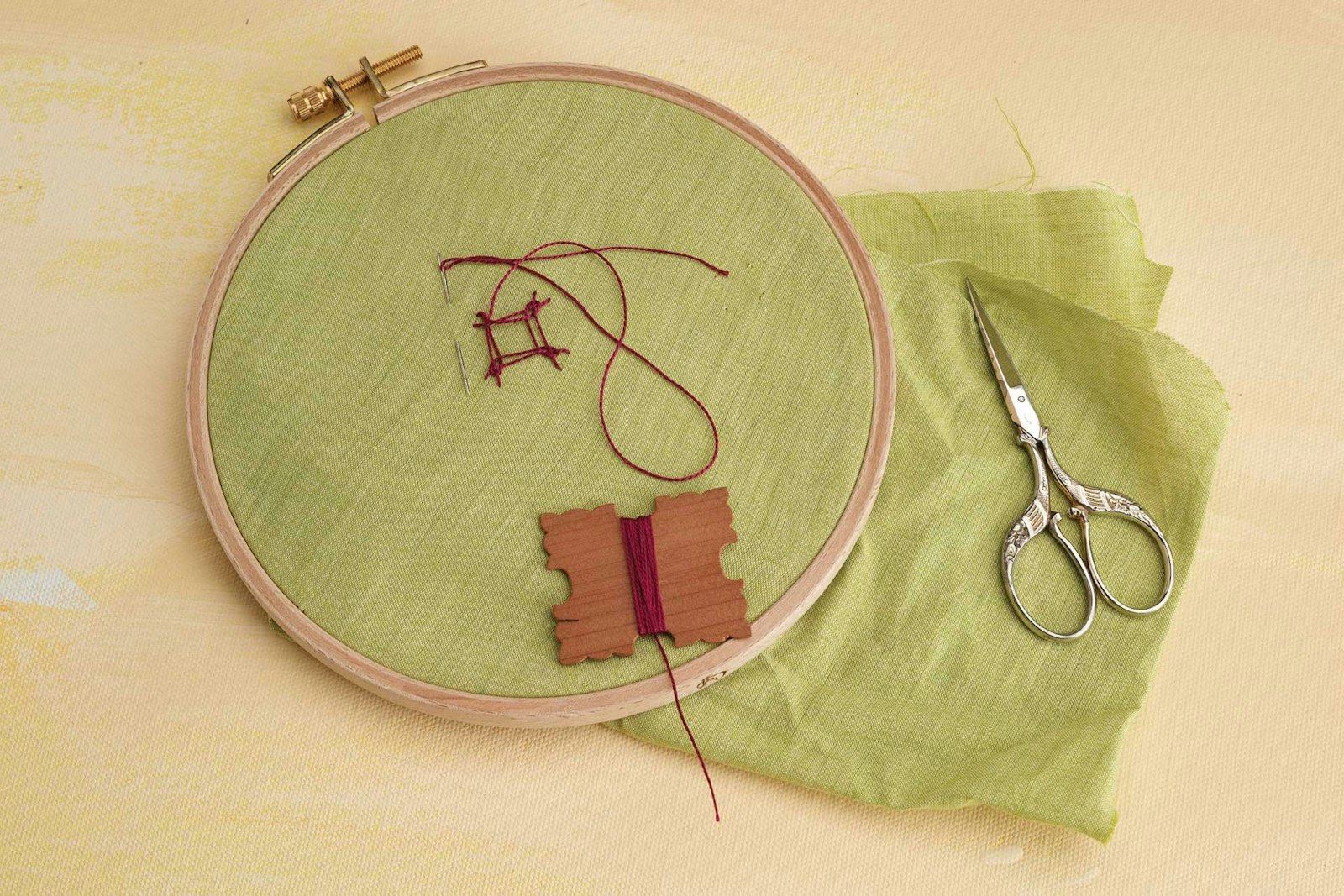In the Trimmings department, PieceWork offers a sampling of patterns, charts, and instructions, gleaned primarily from old magazines and books that are no longer generally available. Use them as given here or adapt them as you like. —Editor
Although the three-thousand-year-old crafts of Armenian lace and embroidery are little done today, they once graced both clothing and household textiles. These two Armenian embroidery patterns, taken from the August 1923 issue of The Modern Priscilla, illustrate how beautiful a simple design can be.
As shown, the smaller pattern is ½ inch (1.3 cm) square while the larger measures 1¼ inches (3.2 cm) square. (You may, of course, make the pattern any size you like.) Size 35/2, 2-ply linen thread is available from Lacis. Here are Armené Lamson’s instructions from The Modern Priscilla:

Armenian embroidery Diagrams I–V
To make each square unit, mark a right-angled cross on your cloth, making each arm exactly the same length. In Diagram I, two dots are added at the ends of the lines to show just where the stitches are to be taken.
Study the detail drawings. Hold your material so that A is at the left, B at the center bottom. Start from the upper dot at corner A. Take a stitch as in herringbone embroidery at corner B, passing the needle from the right to the left dot. When the needle is pulled out, the thread should be over the first side of the square. Turn your work so that corner C comes just where corner B was, and take another stitch in the same way. Turn your work again and bring corner D to where corner B was in the first position, and take a similar stitch. To complete the square foundation, bring your needle over corner D and under to the lower dot at A. Compare your square foundation with Diagram III and see if the stitches overlap alternately at the corners: the evenness of the interlacing stitch, which is the next step, depends upon the foundation’s being properly done.
The interlacing stitch is a sort of darning made on this foundation and not in the material. It is somewhat similar to darning in netting but goes from corner to corner, then back to the side center of the square.
Bring your needle between the two dots at corner A (see Diagram IV), put it under 4, pull the thread out, carry needle over 2 and under to corner B. Bring needle under 1, pull thread out, over 3 and under to corner C. Bring needle under 2, pull thread out, over 4 and under to corner D. The next side completes the square: place needle under 3, over the next, under the next, and over 1, pull thread out. Place needle under corner A and end just where you started the interlacing stitch. Practice this square unit until you can do it well. At first, you may find it easy to turn the work, so that the position of the needle will be from right to left in making all the sides. When making the foundation, it is best to leave the stitches a little loose, and when making the interlacing stitches, draw the thread more closely so that the material will not show through the embroidery.

Armenian embroidery Diagrams VI–IX
The method of making the larger square motif is shown by Diagrams VI–IX. Start at A and follow drawing exactly. After a little practice, you will be able to do without the aid of diagram and will be pleased to find that the stitch works very quickly.
Find this article in the March/April 2005 issue and even more on Armenian embroidery in the Spring 2024 issue of PieceWork.
Also, remember that if you are an active subscriber to PieceWork magazine, you have unlimited access to previous issues, including March/April 2005 and Spring 2024. See our help center for the step-by-step process on how to access them.
Shay Pendray is a needlework author, teacher, and former PBS television host.
Originally published April 7, 2021; updated January 29, 2024.

